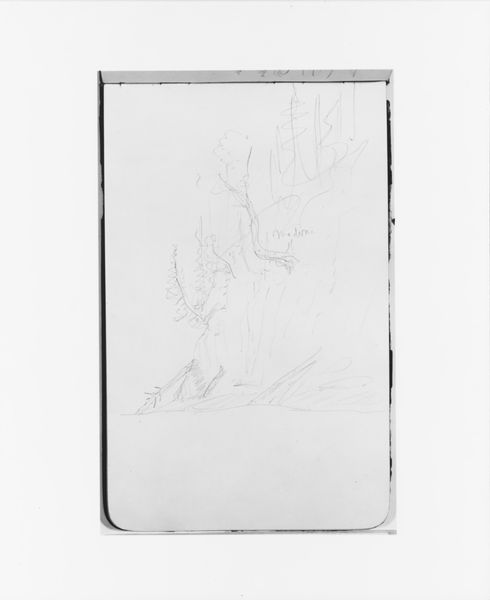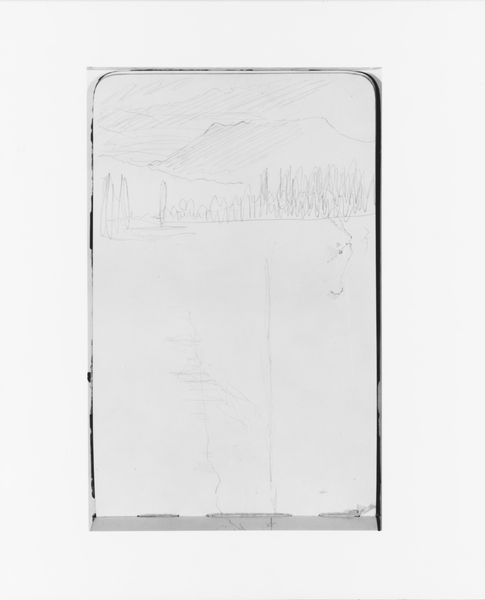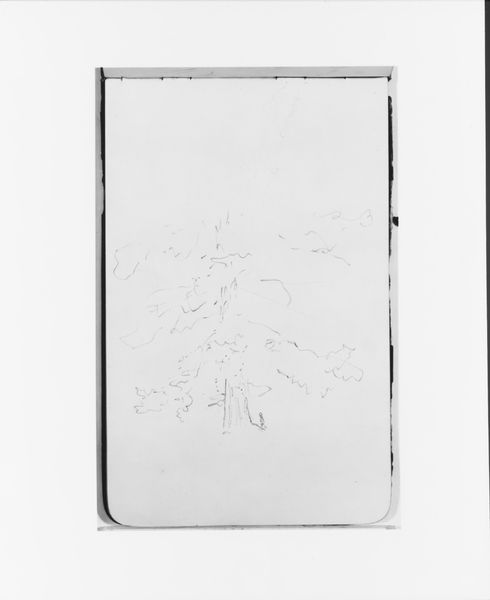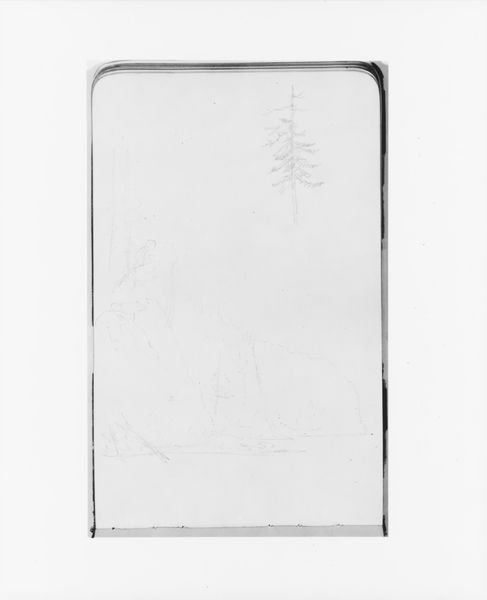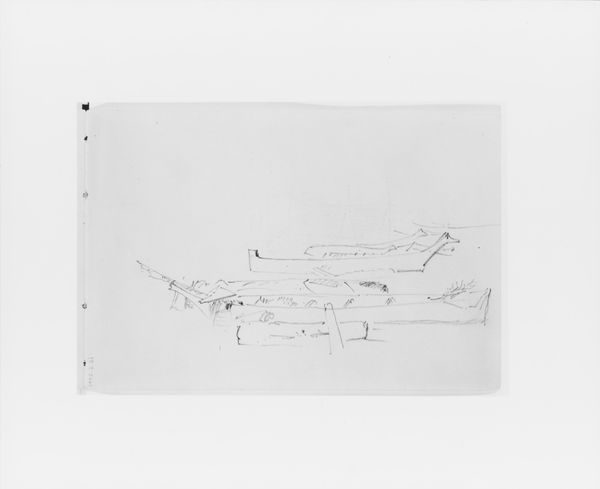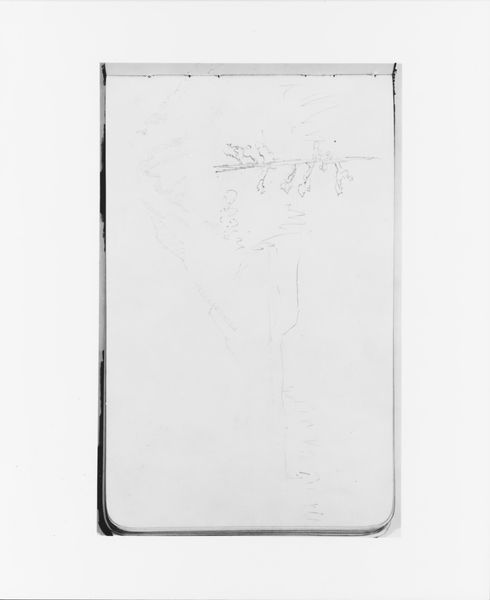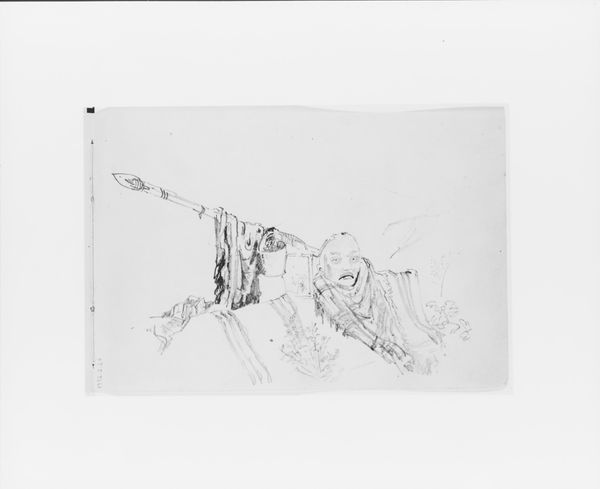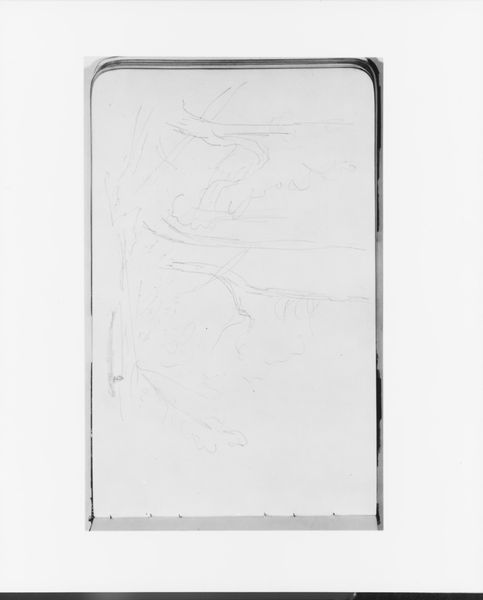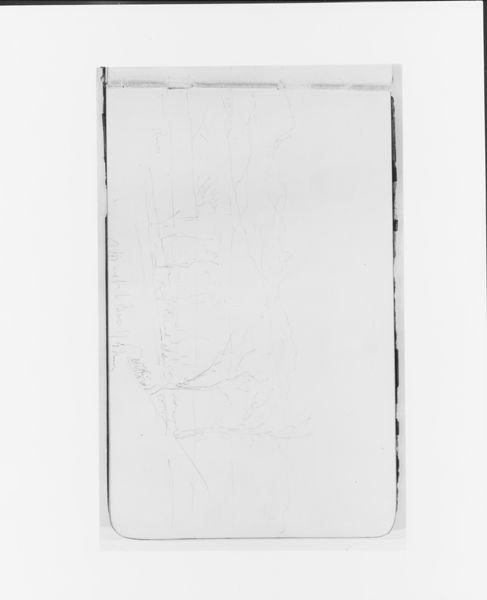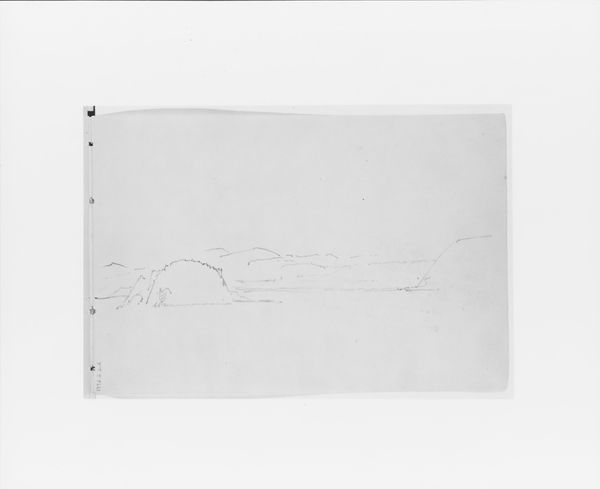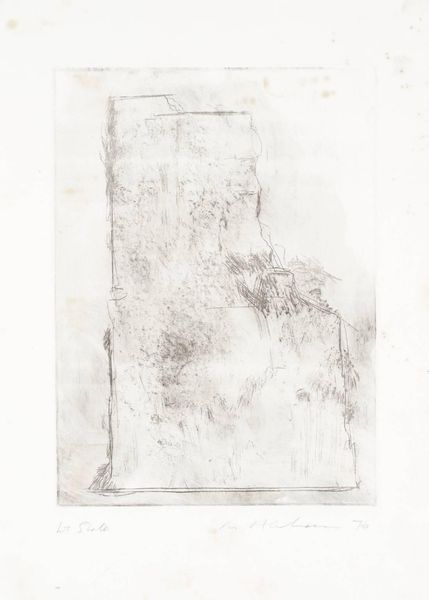
drawing, paper, pencil
#
drawing
#
ink drawing
#
impressionism
#
landscape
#
paper
#
linocut print
#
pencil
#
line
Dimensions: 5 x 7 1/2 in. (12.7 x 19.1 cm)
Copyright: Public Domain
Curator: Here we have a drawing entitled "Landscape," dating back to 1885, part of Sketchbook X, by William Trost Richards. It resides here at The Met. What’s your initial reaction? Editor: Faint! It looks like a half-remembered dream of a forest. Almost ghostly, sketched with the lightest touch. I feel like I'm intruding on something very private. Curator: It’s deceptive, isn't it? An intimate glimpse into the artist's process, yet made for public consumption. Richards, celebrated for his detailed seascapes, gives us something rawer here. Look at the medium – pencil and ink on paper. This isn't about the finished masterpiece, but rather the immediate capture of an idea. A social practice that became common during the second half of the 19th century with the growing popularity of sketching from nature. Editor: I agree, it feels wonderfully free. I think most people associate Richards with watercolours in almost photographic detail. So this skeletal approach is a surprising look inside. It’s the opposite of those works; it’s as if he’s barely holding onto the landscape himself, just grabbing what is in front of him. You can practically feel his hand moving across the paper! What about the wider cultural moment do you think is influencing this work? Curator: Considering the period, the late 19th century, landscape art served varied purposes. Industrialisation had led to people flooding the cities, which gave rise to anxieties about nature and purity. However, depictions of natural beauty, like this drawing, were popular and could offer a nostalgic counterpoint to this urbanisation. The late 19th Century also sees an obsession with science. As society changed, with it came our ideas about time. Scientific understandings and temporal frameworks encouraged individuals to confront their own relative insignificance in the grand scale of temporality and space. The landscape allowed people to find their relationship with themselves. Editor: True! There's a certain romantic melancholy in that starkness that really resonates. I also find myself trying to decipher each little line. There is a whole history there! For instance, those zig-zaggy marks, are they tree tops? Or some wild undergrowth? This sketch encourages an engagement. It shows how provisional reality is. Curator: It invites that kind of intimacy, doesn't it? A collaboration with the viewer to fill in the blanks. Editor: Absolutely, William Trost Richards lets us walk through the dream together, with him! Curator: It certainly challenges what we expect a finished work of art to be. The loose touch makes it timeless.
Comments
No comments
Be the first to comment and join the conversation on the ultimate creative platform.
